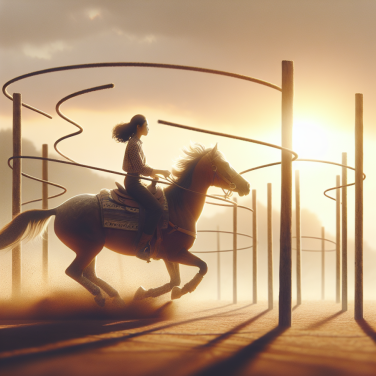Mastering the Artistry and Athleticism in Ballroom Dance Competitions
Competitive ballroom dancing, also known as DanceSport, is where the elegance of traditional ballroom meets the intensity of an athletic sport. Central to this dynamic world is the combination of artistry and athleticism, both of which are indispensable for dancers aiming to triumph in competitions.
In the realm of dance, artistry manifests as the ability to express music and emotions through movement. Dancers paint pictures in the minds of the audience and judges with every step, sway, and gesture. This requires a deep understanding of the music's rhythm, melodies, and mood. The dancers must be storytellers as well as technicians, conveying the narrative of the dance in a way that captivates the onlookers. The choice of costume and styling also plays a pivotal role in this artistic expression. Outfits are carefully selected to enhance movement and to add an extra layer of visual spectacle to the performance.
However, the athletic aspect is just as crucial. Competitive dancers undergo rigorous training, sculpting their bodies to be strong, flexible, and enduring. This physical preparation allows them to execute complex sequences that demand precision, speed, and stamina. It's not simply about looking the part—they must be able to perform intricate footwork effortlessly, maintain poise and alignment while spinning dizzyingly fast, and execute lifts and drops with grace and safety. Understanding the biomechanics of their bodies helps dancers prevent injuries and also enables them to push the boundaries of their physical capabilities.
Mastering both artistry and athleticism takes years of practice and dedication. Dancers spend countless hours in the studio refining their techniques, building their repertoire, and experimenting with their own limits. They learn to harness their muscle memory for technical proficiency while also keeping their performances fresh and emotionally resonant. It's a delicate balance that requires attention to the minutest of details—from the position of a hand to the angle of a head tilt.
In competitions, judges look for this balance of technique, musicality, and showmanship. They assess the technical accuracy of the steps, the timing and rhythm, and the dancers' synchronization with their partners. But beyond these, judges are also looking for a magical quality that sets exceptional performers apart. It's the indefinable 'it' factor—a combination of presence, charisma, and connection with the audience that transforms a good dancer into a great one.
The training for competitive ballroom dance does not only occur in dance studios but also in gyms and even in mental rehearsal spaces.
Read also:
Unleashing the Warrior Within: An In-depth Look at Paintball as a Competitive Sport
The Evolving Landscape of Competitive Ballroom Dancing Styles and Trends
As the spotlight falls on the polished floor, competitive ballroom dancers glide into the illumination, their movements a visual symphony of tradition and innovation. The evolving landscape of ballroom dancing is a testament to the sport's enduring popularity and its ability to adapt to contemporary influences while maintaining its classic roots.
In ballroom dance competitions, two primary styles are traditionally showcased: International Style, with its Standard and Latin divisions, and American Style, also divided into Smooth and Rhythm categories. Each style carries distinct characteristics and has evolved in response to cultural trends, the influences of prominent dancers, and the competitive community's demands.
International Style Standard, known for its elegance and strict syllabus, has seen subtle changes in recent years. Choreography has become progressively intricate, with an emphasis on storytelling and emotional expression. Dancers extend their lines and strive for a floating quality, pushing the boundaries of the stately waltz, tango, Viennese waltz, foxtrot, and quickstep.
Conversely, International Style Latin—a fiery contrast to its Standard counterpart—is marked by intense characterization and athleticism. Rumba, samba, cha-cha, paso doble, and jive derive from social dance forms, continually drawing fresh inspiration from global dances. The hip action, known as Cuban motion, remains integral, yet modern Latin routines incorporate elements from dances like reggaeton, hip-hop, and contemporary, reflecting a diverse cultural influence.
American Style Smooth has transformed dramatically, borrowing from the International Standard but allowing more freedom in movement and expression. Partners may separate and include dance innovations such as spins and dips that diverge from the traditional closed position. This style's competition routines can share more in common with theatrical performances, emphasizing the drama and connection with the audience.
Meanwhile, American Style Rhythm has liberated itself with its pulsating beats and vibrant energy. It comprises cha-cha, rumba, east coast swing, bolero, and mambo, with variations in rhythm and mood, from sensual to playful. This category has absorbed techniques from other genres such as salsa and bachata, blending them seamlessly into the competitive repertoire.
Furthermore, the costumes worn by competitors have also evolved. Designs reflect the time's spirit and often incorporate the latest fashion trends while still adhering to regulations. They augment the performance while interpreting the dance's character, ranging from the ornate embellishments in Latin costumes to the sophistication and sleek lines within the Standard dresses.




